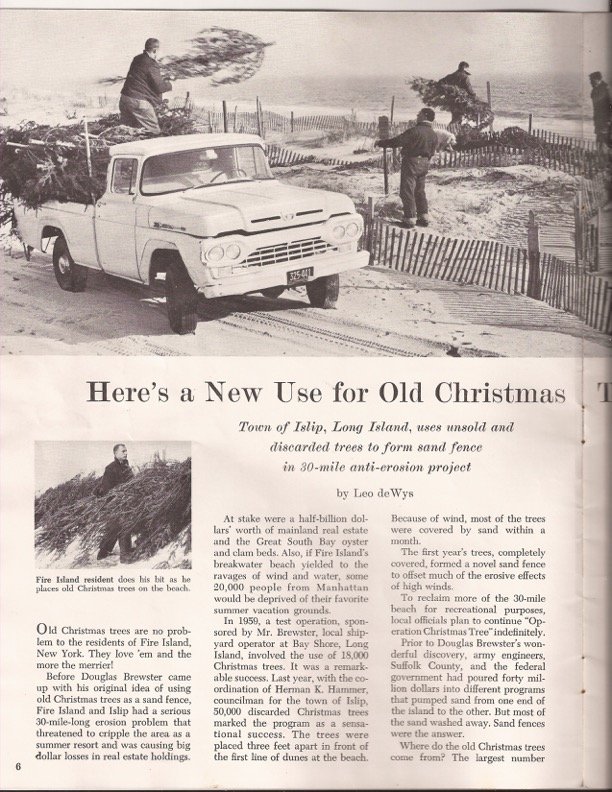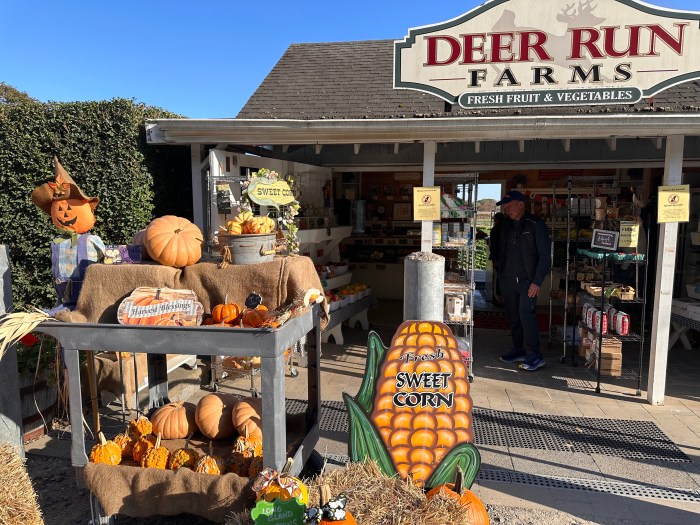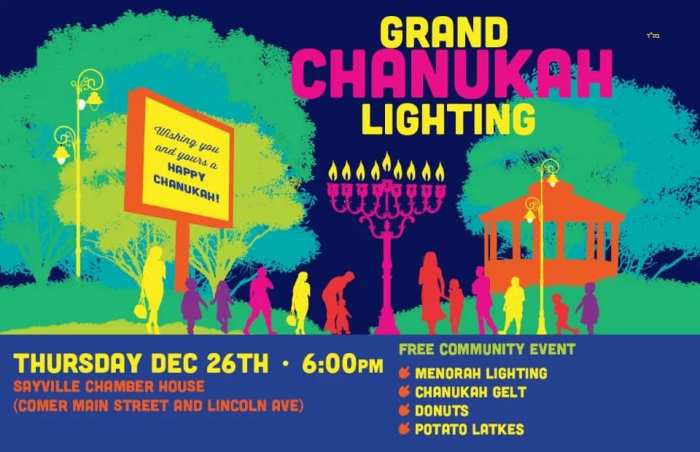Dune Replenishment 2017 vs. 1959
By Kirsten CorssenAs we were home hibernating this past winter, the Army Corp of Engineers was busy replenishing 12.5 miles of dunes at a cost of $12.5 million. Huge pipes stretched from a barge located offshore to the beach. We returned this summer to find freshly built dunes complete with evenly planted dune grass. Similar dune projects have taken place along other Long Island shore locations since Hurricane Sandy.The technology and resources used for this huge replenishment project cannot compare to earlier sand replenishment projects. Douglas Brewster, an Atlantique native, shared stories of early attempts to replenish the dunes.Douglas Brewster watched the dunes decay over the years and would actively try to come up with solutions to the situation. One winter afternoon as Douglas was sitting by his Christmas tree he came up with an idea to save the dunes and to keep the Christmas trees out of the landfills.“What if I lined the Christmas trees in the dunes and let the wind cover them with sand, creating mounds of sand and eventually dunes,” I can imagine Douglas saying back in 1959. “I can collect Christmas trees from people on the mainland, stack them on a barge, bring them to Fire Island and place them along the dunes using my Ford pick up truck.”In fact, his idea was so innovative that he gained the attention of the Ford Truck Corporation.“Before Douglas Brewster came up with his original idea of using old Christmas trees as a sand fence, Fire Island and Islip had a serious 30-mile-long erosion problem that threatened to cripple the area as a summer resort and was causing a big dollar losses in real estate holdings,” noted the Ford Magazine article about Brewster’s Dune project. “50,000 discarded Christmas Trees marked the program as a sensational success. The trees were placed three feet apart in front of the first line of dunes at the beach. Because of wind, most of the trees were covered by sand within a month.”Ford was not only intrigued by his idea but also interested because he used a Ford pickup to transport the trees. The trucks 4×4 ability made it possible for Brewster to bring in the trees, even with the lack of roads on Fire Island. The 1959 truck operated smoothly in the sand, and became a huge part in restoring the Fire Island dunes at that time. Brewster’s ideas and the Ford truck offered a low-tech solution to help our dunes endure.Douglas Brewster Jr., his story published in my last column, lives today to tell his father’s story. He stated that the dunes that protect us today used to be triple the size, more like the dunes at Sunken Forest.“The reason why the dunes deteriorate so easily is because of all the homes, which obstruct nature from piling sand up into dunes,” explained Douglas Jr.He also spoke of the rows of houses that were lost over the years.From Christmas trees to sand pumps, Fire Island dunes are always changing shape and size. It will be interesting to see how technology will change our dune line in the future.




























